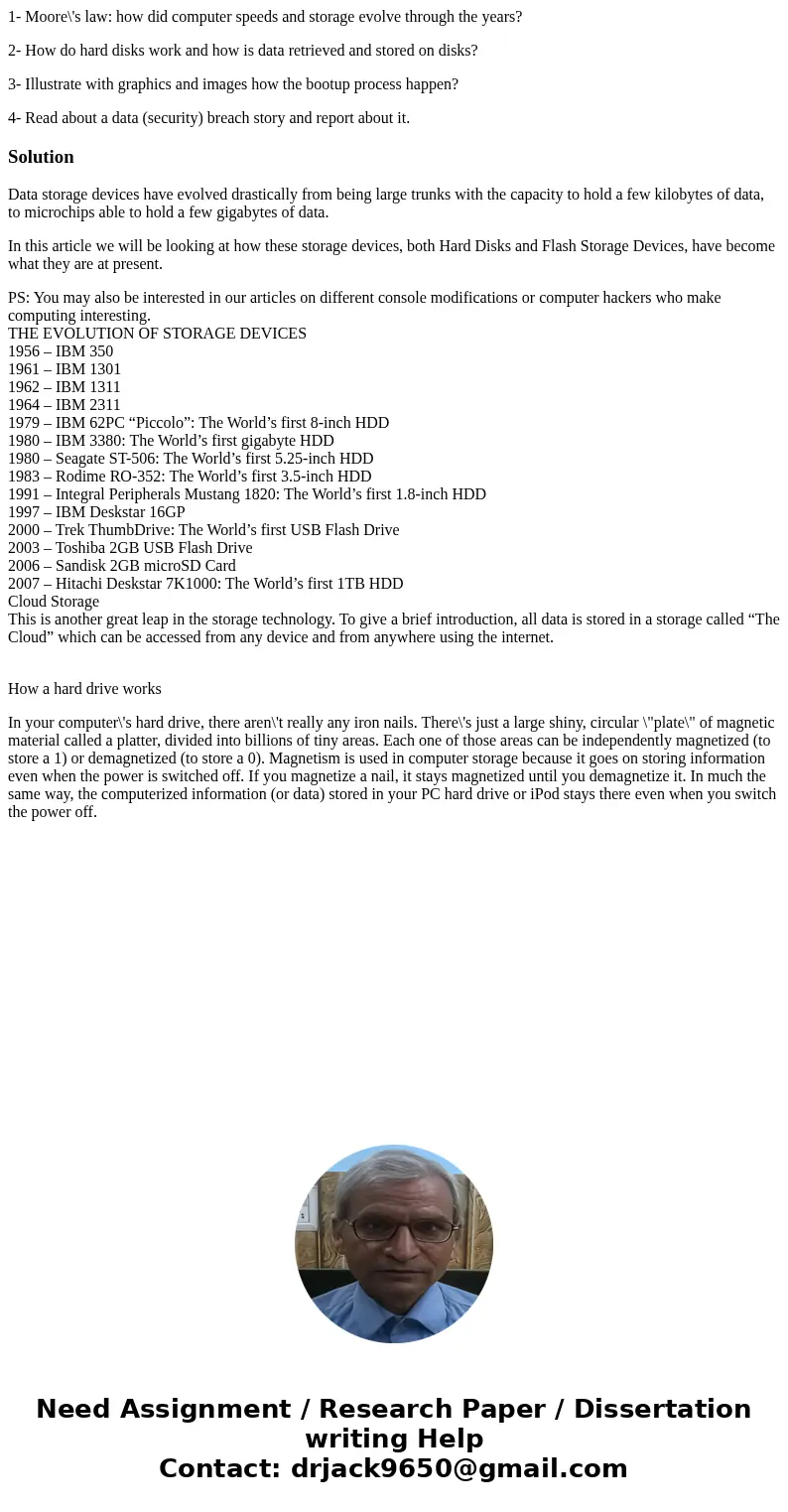1 Moores law how did computer speeds and storage evolve thro
1- Moore\'s law: how did computer speeds and storage evolve through the years?
2- How do hard disks work and how is data retrieved and stored on disks?
3- Illustrate with graphics and images how the bootup process happen?
4- Read about a data (security) breach story and report about it.
Solution
Data storage devices have evolved drastically from being large trunks with the capacity to hold a few kilobytes of data, to microchips able to hold a few gigabytes of data.
In this article we will be looking at how these storage devices, both Hard Disks and Flash Storage Devices, have become what they are at present.
PS: You may also be interested in our articles on different console modifications or computer hackers who make computing interesting.
THE EVOLUTION OF STORAGE DEVICES
1956 – IBM 350
1961 – IBM 1301
1962 – IBM 1311
1964 – IBM 2311
1979 – IBM 62PC “Piccolo”: The World’s first 8-inch HDD
1980 – IBM 3380: The World’s first gigabyte HDD
1980 – Seagate ST-506: The World’s first 5.25-inch HDD
1983 – Rodime RO-352: The World’s first 3.5-inch HDD
1991 – Integral Peripherals Mustang 1820: The World’s first 1.8-inch HDD
1997 – IBM Deskstar 16GP
2000 – Trek ThumbDrive: The World’s first USB Flash Drive
2003 – Toshiba 2GB USB Flash Drive
2006 – Sandisk 2GB microSD Card
2007 – Hitachi Deskstar 7K1000: The World’s first 1TB HDD
Cloud Storage
This is another great leap in the storage technology. To give a brief introduction, all data is stored in a storage called “The Cloud” which can be accessed from any device and from anywhere using the internet.
How a hard drive works
In your computer\'s hard drive, there aren\'t really any iron nails. There\'s just a large shiny, circular \"plate\" of magnetic material called a platter, divided into billions of tiny areas. Each one of those areas can be independently magnetized (to store a 1) or demagnetized (to store a 0). Magnetism is used in computer storage because it goes on storing information even when the power is switched off. If you magnetize a nail, it stays magnetized until you demagnetize it. In much the same way, the computerized information (or data) stored in your PC hard drive or iPod stays there even when you switch the power off.

 Homework Sourse
Homework Sourse